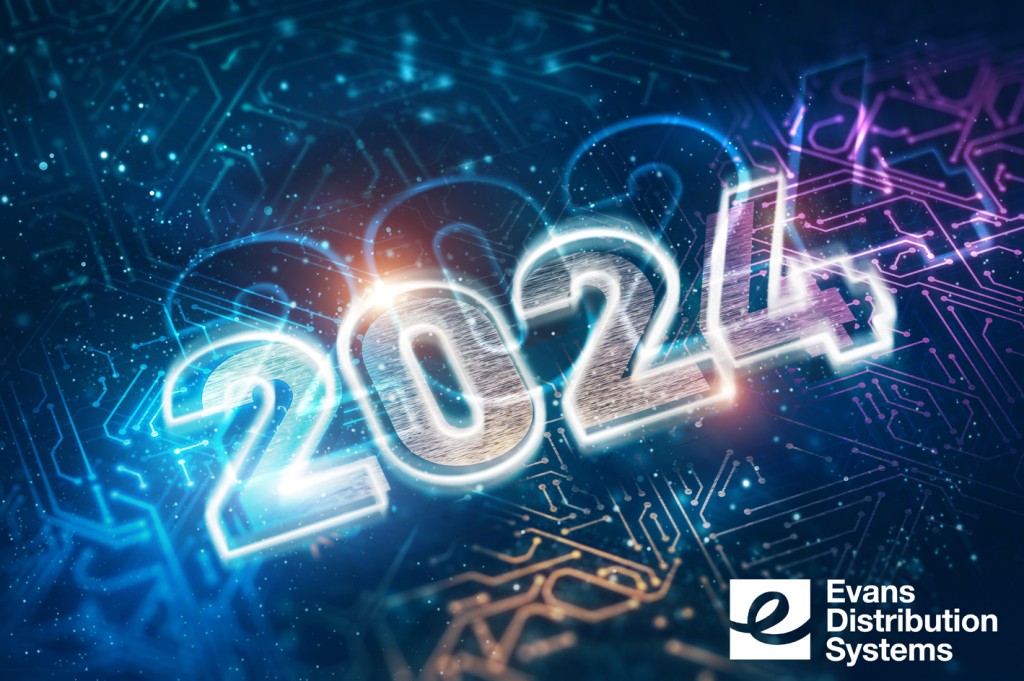The technological landscape of 2024 will be shaped by groundbreaking innovations and transformative advancements. The tech trends of this year will redefine the way people live, work, and interact with the world. From the integration of artificial intelligence and extended reality to the evolution of 5G connectivity and the emergence of sustainable technology solutions, this year holds the potential to push the boundaries of what was thought possible. The following are ten tech trends that will revolutionize the digital landscape in 2024.

Generative AI
Generative AI, short for Generative Artificial Intelligence, refers to a class of artificial intelligence algorithms and models designed to generate new, original content. Unlike traditional AI systems that are task-specific and rule-based, generative AI can create content autonomously by learning patterns and structures from vast amounts of data. Generative AI has applications in various fields, including image and text generation, creative arts, and even generating realistic human-like voices.
Extended Reality (XR)
Extended Reality (XR) is an umbrella term that encompasses different immersive technologies, combining both physical and virtual realities to create a blended or extended experience. XR includes Virtual Reality (VR), Augmented Reality (AR), and Mixed Reality (MR). It represents a spectrum where the boundaries between the physical and digital worlds are blurred, providing users with experiences that go beyond traditional interactions with screens or physical surroundings. XR finds applications in gaming, education, healthcare, manufacturing, and various other industries.
Datafication
Datafication is the process of converting various aspects of life, activities, and processes into digital data. It involves the collection, analysis, and utilization of data to quantify and represent aspects of the world that were traditionally not considered data-driven. The goal of datafication is to make information more accessible, analyzable, and actionable, leading to improved decision-making and efficiency in various domains. Datafication can include anything from tracking individual health metrics through wearable devices, monitoring online activities, or digitizing physical records into electronic databases.
Quantum Computing
Quantum computing is a revolutionary approach to computation that harnesses the principles of quantum mechanics to perform calculations. Quantum computers leverage superposition and entanglement to process and store information in ways that classic computers cannot. This allows them to perform certain types of calculations much more efficiently than classic computers. Quantum computers hold great potential for solving complex problems in areas such as cryptography, optimization, materials science, and machine learning.
API-driven Customizations
API-driven customizations refer to the process of tailoring and adapting software applications, platforms, or systems by utilizing Application Programming Interfaces (APIs) to interact with and modify their functionalities. APIs act as intermediaries that allow different software components to communicate and share data. In the context of customization, API-driven approaches enable developers or users to extend, enhance, or personalize the behavior of a software application without directly modifying its core code. Instead of making changes to the source code, users leverage the exposed APIs to interact with the application’s features, retrieve or manipulate data, and implement custom functionalities.
Progressive Web Apps (PWAs)
Progressive Web Apps (PWAs) are a type of web application that leverages modern web technologies to deliver an enhanced and app-like experience to users. PWAs combine the best features of both traditional web applications and native mobile applications, offering a seamless, reliable, and engaging user experience.
Edge Computing
Edge computing is a distributed computing model that involves processing data closer to the source of data generation rather than relying solely on centralized cloud servers. In edge computing, computing resources and data storage are located near the “edge” of the network, closer to the devices and sensors that generate the data. This approach aims to reduce latency, enhance real-time processing capabilities, and alleviate the load on centralized cloud infrastructure.
Fifth Generation (5G)
Fifth Generation (5G) refers to the latest generation of mobile network technology, succeeding 4G (LTE/WiMax). It represents a significant advancement in wireless communication, offering faster data speeds, lower latency, increased network capacity, and enhanced connectivity compared to its predecessors. 5G technology is expected to have a huge impact on various industries, including healthcare, automotive, smart cities, and entertainment, unlocking new possibilities for communication and connectivity.
Sustainable Technology
Sustainable technology, also known as green technology or eco-friendly technology, refers to the development and use of technology that minimizes its impact on the environment, conserves natural resources, and promotes long-term ecological balance. The goal of sustainable technology is to address global environmental challenges, reduce our carbon footprint, and create solutions that contribute to a more sustainable and resilient future. Examples of sustainable technology include electric vehicles, energy-efficient buildings, renewable energy technologies, sustainable agriculture practices, and water conservation technologies.
Cyber Resilience
Cyber resilience refers to an organization’s ability to prepare for, respond to, and recover from cyber threats and attacks in a way that maintains the continuity of its operations, protects sensitive data, and ensures the overall integrity of its information systems. Unlike traditional cybersecurity measures that primarily focus on preventing and detecting cyber threats, cyber resilience emphasizes the ability to adapt and recover in the face of evolving and sophisticated cyber risks.
The top ten tech trends of 2024 collectively represent a transformation in the way people will engage with the world. From the integration of quantum computing and extended reality to the adoption of sustainable practices in tech development, the landscape is evolving at an unprecedented pace. These trends will redefine possibilities and pave the way for a future where technology serves as a positive force for global innovation and well-being.
